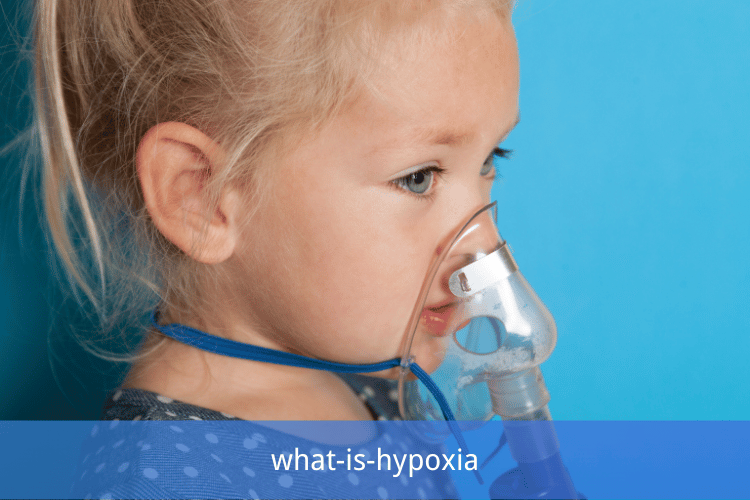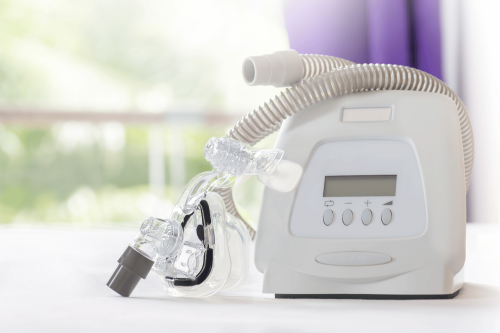
Oxygen is essential to human life, fueling every cell and organ. Yet, when oxygen availability drops below the levels required for normal function, the body enters a state of hypoxia. If not addressed promptly, this condition can lead to significant health complications.
Hypoxia is not limited to extreme environments like high-altitude trekking or underwater activities. It can also result from medical conditions or everyday circumstances, making it critical for everyone—including healthcare professionals, caregivers, and the general public—to understand its causes, symptoms, and treatment.
This article provides an in-depth look at hypoxia, its effects, and practical strategies to address and prevent it.
What Is Hypoxia and Its Importance?
Understanding Hypoxia
Hypoxia occurs when the body’s tissues do not receive enough oxygen to function optimally. It can affect the entire body (generalized hypoxia) or specific organs (localized hypoxia). Adequate oxygen levels are crucial for processes like energy production and cellular repair; without them, the body struggles to maintain basic functions.
Hypoxia vs. Hypoxemia
It’s important to distinguish hypoxia and hypoxemia:
- Hypoxia refers to oxygen deprivation at the tissue level.
- Hypoxemia refers to low oxygen levels in the blood. While hypoxemia often leads to hypoxia, tissues can become deprived of oxygen even if blood oxygen levels are normal due to other factors like poor circulation or cellular inability to use oxygen.
Both conditions are life-threatening and require prompt attention to prevent permanent damage or death.
Why It Matters
Hypoxia can result in severe complications, including organ failure, cognitive impairment, and even death. Early detection and intervention can drastically improve outcomes, making awareness a key defense against this silent threat.
Types of Hypoxia and Their Causes
Hypoxia can be categorized into four main types, each with distinct causes:
1. Hypoxic Hypoxia
This is the most common type of hypoxia.
- Cause: Low oxygen in the air or impaired lung function.
- Examples:
- High-altitude environments where atmospheric oxygen is low.
- Respiratory conditions like asthma or chronic obstructive pulmonary disease (COPD).
- Effect: Lack of oxygen uptake by the lungs leads to decreased oxygen delivery to the body.
2. Anemic Hypoxia
- Cause:
- Low hemoglobin levels (e.g., anemia due to iron deficiency or blood loss).
- Carbon monoxide poisoning, which prevents hemoglobin from binding to oxygen.
- Effect: Blood is unable to carry adequate oxygen, despite normal lung function.
3. Circulatory (Stagnant) Hypoxia
- Cause:
- Poor blood flow due to conditions like heart failure, shock, or blood clots.
- Effect: Adequate oxygen reaches the blood, but it fails to circulate effectively, depriving tissues of oxygen.
4. Histotoxic Hypoxia
- Cause:
- Cellular inability to utilize oxygen due to toxins like cyanide or excessive alcohol consumption.
- Effect: Cells are unable to process oxygen effectively, even if oxygen is plentiful in blood.
Understanding these types can help guide diagnosis and treatment, as each requires a tailored approach to address its underlying cause.
Symptoms of Hypoxia (Mild to Severe)
The symptoms of hypoxia depend on its severity and progression. Recognizing these signs early is vital for preventing complications.
Mild Symptoms
- Shortness of breath
- Rapid breathing or heart rate
- Fatigue or difficulty exercising
- Restlessness and mild confusion
Moderate Symptoms
- Cyanosis (bluish tint around the lips or fingernails)
- Impaired concentration or memory
- Dizziness and headaches
- Visual disturbances, such as blurry vision
Severe Symptoms
- Loss of consciousness
- Seizures
- Organ failure (e.g., heart or kidneys)
- Respiratory arrest leading to cardiac arrest
If any symptoms of severe hypoxia appear, immediate medical attention is necessary.
Diagnosis and Treatment of Hypoxia
Diagnosis
Doctors use several methods to diagnose hypoxia:
- Pulse Oximetry:
- A simple, non-invasive test that measures blood oxygen saturation (SpO₂).
- Normal SpO₂ levels are 95–100%. Levels below 90% warrant concern.
- Arterial Blood Gas (ABG):
- Measures blood oxygen, carbon dioxide levels, and pH balance for a more precise evaluation.
- Imaging and Other Tests:
- X-rays or CT scans may identify respiratory conditions.
- Electrocardiograms (ECG) and echocardiograms assess cardiac function.
Treatment
Effective treatment involves both addressing the underlying cause and restoring oxygen levels:
- Supplemental Oxygen Therapy:
- Administered via nasal cannula, mask, or mechanical ventilation for immediate oxygenation.
- Medications:
- Bronchodilators for conditions like asthma.
- Blood thinners for clots causing circulatory issues.
- Antidotes for toxins like carbon monoxide or cyanide.
- Advanced Interventions:
- Hyperbaric oxygen therapy for cases like severe carbon monoxide poisoning.
- Mechanical ventilation for respiratory failure.
Prompt diagnosis and treatment can reverse hypoxia and prevent life-threatening complications.
Prevention Strategies for Hypoxia
Preventing hypoxia involves taking proactive steps to reduce risk factors:
1. Monitor Oxygen Levels
- Use pulse oximeters if you have underlying respiratory conditions or are recovering from illnesses like COVID-19.
- Seek medical advice if oxygen levels consistently drop below 95%.
2. Address Underlying Conditions
- Regularly manage chronic conditions like asthma, COPD, or heart disease.
- Follow prescribed treatments and avoid smoking, which reduces lung efficiency.
3. Healthy Lifestyle Choices
- Stay active to improve cardiovascular and respiratory health.
- Eat a balanced diet rich in iron to maintain healthy hemoglobin levels.
4. Environmental Precautions
- Acclimatize gradually when traveling to high altitudes.
- Avoid prolonged exposure to pollutants or smoke-filled environments.
Early prevention reduces the likelihood of emergencies and ensures better management of chronic risks.
When to Seek Medical Attention for Hypoxia
Knowing when to seek medical help can save lives in cases of hypoxia. Here are some guidelines:
Critical Symptoms That Require Urgent Care
- Severe shortness of breath, even at rest.
- Confusion or unresponsiveness.
- Cyanosis or chest pain.
- Weakness or fainting.
Emergency Response Steps
- Call for emergency medical services immediately.
- Provide supplemental oxygen if available.
- Keep the person comfortable and monitor their condition until help arrives.
Acting swiftly can prevent lasting damage.
Frequently Asked Questions (FAQs)
Q: What is hypoxia and how is it related to hypoxemia?
A: Hypoxia refers to a condition in which there is a deficiency of oxygen in the tissues, whereas hypoxemia is specifically the low level of oxygen in the blood. Hypoxemia can lead to hypoxia if oxygen levels are not restored, therefore understanding both conditions is crucial for effective management and treatment.
Q: What are the common symptoms of hypoxia?
A: Symptoms of hypoxia may include shortness of breath, rapid heartbeat, confusion, cyanosis (bluish discoloration of the skin), and fatigue. These signs and symptoms can vary based on the severity of hypoxia and the specific tissues affected.
Q: What are the primary causes of hypoxia?
A: The cause of hypoxia can include various factors such as respiratory illnesses, high altitudes, carbon monoxide poisoning, and certain cardiovascular conditions that affect blood flow. Any situation that leads to low oxygen levels can potentially cause hypoxia.
Q: How can hypoxemia be diagnosed?
A: To diagnose hypoxia, healthcare providers often use tests such as arterial blood gas analysis, which measures the levels of oxygen and carbon dioxide in the blood, as well as pulse oximetry to assess oxygen saturation levels. These tests help determine if there is adequate oxygen in your blood.
Q: What are the risk factors associated with developing hypoxia?
A: Risk factors for hypoxia include pre-existing respiratory conditions such as chronic obstructive pulmonary disease (COPD), congestive heart failure, living at high altitudes, and smoking. Individuals with these conditions may have a higher likelihood of experiencing low oxygen levels.
Q: What management and treatment options are available for hypoxia?
A: Management and treatment of hypoxia often involve supplemental oxygen therapy to increase the amount of oxygen delivered to the lungs and tissues. In severe cases, interventions may include mechanical ventilation or addressing the underlying cause of hypoxia, such as treating infections or improving blood flow.
Q: How can one prevent hypoxia from occurring?
A: Preventing hypoxia involves maintaining a healthy lifestyle, avoiding smoking, managing chronic health conditions, and ensuring proper ventilation in living and working environments. Additionally, individuals at risk should monitor their oxygen levels and seek medical advice when experiencing symptoms associated with low oxygen levels.
Q: What is the relationship between hypoxia and cerebral hypoxia?
A: Cerebral hypoxia is a specific type of hypoxia that occurs when there is insufficient oxygen supply to the brain. This can lead to serious neurological effects and may be caused by factors such as stroke, cardiac arrest, or severe respiratory failure, emphasizing the critical need for prompt diagnosis and treatment.
Q: What are the signs and symptoms of severe hypoxia?
A: Signs and symptoms of severe hypoxia may include extreme confusion, loss of consciousness, severe difficulty breathing, and a significant decline in oxygen saturation levels. Immediate medical attention is essential in such cases to prevent serious complications.
The Bottom Line
Hypoxia is a serious condition that can occur unexpectedly yet presents clear diagnostic and treatment options when recognized early. Understanding its types, causes, and symptoms arms individuals with the tools to respond effectively.
By addressing underlying conditions, adopting preventive strategies, and promoting awareness, we can manage hypoxia efficiently and even save lives. Whether you are a medical professional or a concerned individual, your knowledge of hypoxia can make an invaluable difference.








 Login with Google
Login with Google Login with Facebook
Login with Facebook